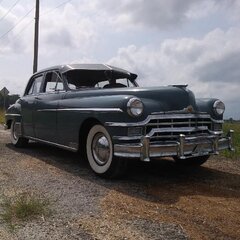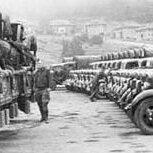I wonder how many fluid drive cars were parked over the years, and left to rot, because of leaking fluid drive units that owners couldn't afford to repair? How many clutch jobs ballooned into major jobs when the FD seal was damaged during removing and replacing a transmission? How many of those cars could have continued on with something as simple and cheap as a bolt in the fluid drive to keep them on the road? Maybe not too many, I don't know, but I wonder. I have seen cars parked for much lesser reasons, and then father time took over and destroyed the vehicle before anyone got around to fixing it right. Just how often was this band aid applied back in the day? We will never know, but it is the kind of thing I seem to enjoy thinking about. Just another intriguing aspect, to me, of old cars.


